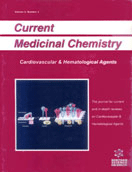Abstract
This review highlights the most important research data related to membrane potential and current changes in cardiomyocytes during hypotonic stress. Relative decrease in osmolarity in extracellular compartment (due to accumulation of metabolic products in the cells) during acute episodes of ischemia in the heart muscle leads to cell swelling caused by water entering the cells. Such condition starts regulatory volume decrease (RDV) in cardiomyocytes - a process involving activation of various ion channels. It seems to be the crucial proarrhythmic mechanism in ischemic heart, probably very often responsible for sudden cardiac death. Understanding of electrophysiological changes during hypotonic stress of cardiomyocytes is a basis for appropriate pharmacological intervention preventing serious arrhythmias. For instance, outwardly rectifying swelling-induced chloride currents (IClswell), inwardly rectifying non-selective cation current (INSC) and slow component of delayed rectifier K+ currents (IKs) are activated during hypotonic stress in ventricular myocytes and substances like anthracene-9-carboxylic acid (9-AC), chromanol (293B) and gadolinium (Gd3+), able to modulate former channels, should be considered to be potential antiarrhythmic drugs in the near future.
Keywords: cardiomyocytes, arrhythmias, hypotonic swelling, cardiac ischemia, antiarrhythmic drugs, ionic channels, chloride channels, potassium channels, non-selective cation channels, regulatory volume decrease
 3
3













